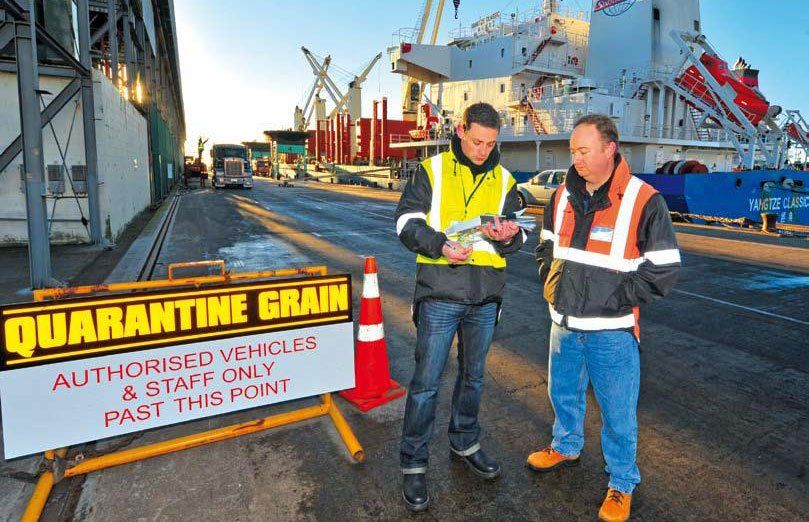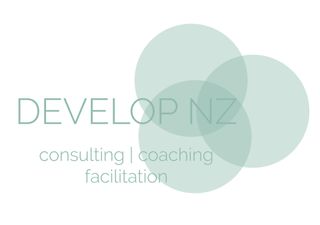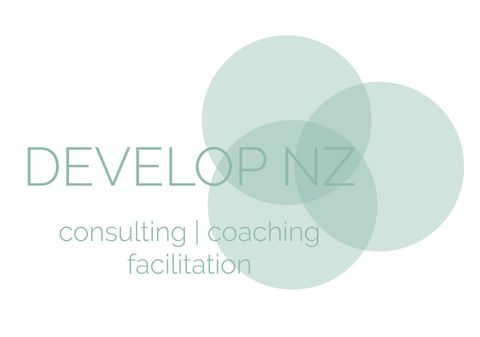7 THINGS SUCCESSFUL COMMUNICATORS DO
Linzi Ebbage Thomas • September 22, 2020
We communicate with people every day, but sometimes we don’t adjust our communication style to the audience or situation. This can lead to confusion, hurt feelings, or misunderstandings.

Learn how to adapt the way you communicate to different situations by considering the many factors that influence the effectiveness of your communication.
Here are 7 things you could think about:
1. Think about the situation or occasion.
The context of your communication makes a difference, both in the way you engage with others and in the way they interpret your communication.
Remember that time and place matter. A joke that would be a hit with your friends may not be appropriate at the office. Similarly, pouring your heart out to a dear friend is different from doing so with a young child.
Identify the level of formality. Formal occasions like ceremonies and business presentations require more formal language and dress. Informal occasions like hanging out with your family or friends allow you to be more relaxed and casual.
2. Identify your goal.
Know the purpose of your interaction so you can adapt your communication effectively. For example, if you want to build a friendship with a colleague, you may invite them out for a cup of coffee or ask them to join you for lunch. But if you want to keep your work and personal lives separate, you will probably keep your communication polite and professional.
3. Know your audience.
To adapt your communication effectively, you need to understand who you are interacting with. See things from their view and tailor your communication to them as much as possible.
Recognize your relationship with the audience. With a good friend, you will probably be able to be more upfront and blunt. With a supervisor, you will want to speak with respect. With a cashier, you may want to be friendly, but conservative.
Acknowledge differences in personality. For example, extroverts like to communicate face-to-face, over the phone and in large groups. They tend to think aloud. Introverts prefer to talk through emails, text messages and in one-on-one conversations. They often need time to reflect before answering questions.
Conduct an audience analysis. Look at the age-span, gender, education level, values, cultures, family structures and background experiences of those in your audience. This is especially helpful when giving speeches to unfamiliar audiences.
4. Consider the method of your communication.
Each method of communication has advantages and disadvantages. If you are able to choose, pick the method that would be most effective for your audience. Otherwise, work within its existing structure.
During meetings, participate by sharing ideas but also take the time to listen. Do not monopolise the discussion.
When giving a speech, realize that you are the only one talking. Anticipate questions your audience may have and try to address those in your communication.
When engaging in social media you can be more relaxed. Communication often occurs in one-or-two-sentence segments. Be casual, but concise.
Email and text messaging require a conscious choice of words. Be direct. Express tone through your words or the use of emoticons (smiley faces).
5. Watch your words.
Be intentional with the language you use. Words can help you quickly connect with someone, but they may also offend them.
Choose words based on the age, education, and literacy level of the person(s) you are talking with. Use words they understand and can connect with.
Use technical words only if you are communicating with people who know what they mean. If you must use jargon, take the time to explain what it means.
6. Be intentional with your body language.
Body language can be interpreted differently in different situations. Adapt your non-verbal communication to the situation at hand.
Eye contact is generally a good way to connect with the person you are talking with. However, if it is an extremely sensitive situation, sitting side-by-side with someone can remove the pressure of having to look someone in the eyes and thus make the other person more comfortable.
Personal space varies both by culture, by individual and by relationship. With your spouse or partner, you may sit close enough that your legs or shoulders are touching. However, when you sit near a supervisor or complete stranger, you’ll want to leave some distance between you.
7. Pay attention to the other person's feedback.
Some people may offer verbal feedback by asking questions. You can also watch their nonverbal communication - crossing their arms, looking away, yawning, nodding - to see how they are responding to what you are saying.
If they seem nervous, make sure you are in a place where they feel comfortable. Engage them in small talk to help them calm down. Ask questions to get to know them better.
If they seem confused, explain it again in different words. Ask them what part confuses them. Find visuals, metaphors, or illustrations to demonstrate your point clearly. If they seem upset, listen to them and try to understand why. Wait to voice your own thoughts or attempt to persuade them differently.
So are you a successful communicator? Do you want to know more?
Contact us at Linzi@careersteps.co.nz or on 0274 903175 to discuss facilitation and coaching options.
Acknowledgements:
Duck, Steve, and David McMahan. The Basics of Communication: A Relational Perspective. 2nd edition. Los Angeles: Sage Publications, 2012.
Adler, Ronald B., and Neil Towne. Looking Out, Looking In. 10th ed. Belmont, CA: Wadsworth, 2003.
Newlands, Alison; Anderson, Anne H.; Mullin, Jim. "Adapting Communicative Strategies to computer-mediated communication." Applied Cognitive Psychology, Apr 2003: 325-348.
http://www.hawaii.edu/mauispeech/html/analyzing_your_audience.html

The background Springfree Trampolines are a global company that manufacture recreational trampoline products and accessories. The unique Springfree design was invented by Dr. Keith Vivian Alexander, an associate professor in the Mechanical Engineering Department at the University of Canterbury in Christchurch, New Zealand where their NZ HQ is based. The Christchurch HQ Team has had a number of requirements that have involved Career Steps – deepening mutual understanding and trust over a number of years. What I did for Springfree Initially, some of the Senior Leaders were seeking professional growth. To assist them in their development they appointed Career Steps as Executive Coaches. Meeting regularly, the coachees were challenged to identify any gaps in their development and plans were established to target growth in these areas. Some of these close coaching relationships have evolved into "check-ins" to ensure that the required development is still being gained. There have also been opportunities for me to be involved in the international recruitment of new team members for the Christchurch Team; the additional goal being that existing team members would be equipped to carry out future recruitment campaigns with added rigour and confidence and without the need for external assistance. I have also had the opportunity to facilitate Team Development, with outcomes aimed at ensuring that the Christchurch Team are working at the highest performance levels and living Springfree’s cultural values. The results Enduring relationships with the Executive Team and coaches reflect the success of our work with Springfree. “ Linzi’s coaching and support over the last 18 months has been invaluable and I could not have got through some of my ‘growth’ moments without her support and guidance. Linzi has coached me to reflect on my leadership style, by holding up the mirror to identify how others may see me and the key areas I need to set goals around, for my growth and improvement. ” - SENIOR LEADER, SPRINGFREE NZ

Port Taranaki The background The brief was to provide information to the Human Resource Team at Port Taranaki who were preparing a business case for presentation to the Senior Leadership Team and Board on changes to the existing Performance Appraisal System. The existing system was robust, well designed and had initial success in parts of the organisation. However, without sufficient training and on-going leadership it had fallen by the wayside and was seen as ineffective, with evaluation criteria that could cause anxiety. What I did for Port Taranaki Through in-depth conversations with Human Resources and staff, a phased approach to change was suggested. The underpinning philosophy was to create great conversations that drive a higher level of performance from every employee at Port Taranaki. Ultimately, the existing appraisal system could be returned to. But for 2-3 cycles, it was recommended that the basic skills of great conversations - regular positive and developmental feedback - should be the focus. Through communicating and offering skills development, day-to-day conversations would be enriched. Specific and timely feedback and performance management issues would be nipped in the bud rather than escalating. It was suggested that Leaders were developed to observe Moments of Truth and confidence build to they knew how to act on them.. My consultancy allowed the business case to be written, providing information on: rationale for change; benefits associated with building a successful high performance culture; risks associated with the proposed approach and suggestions on how they could be mitigated. The results The Human Resources Team received a detailed 23-page report with specific phases outlined, including: Suggestions for aligning all HR systems A new approach to writing Position Descriptions How to re-frame the Induction process Recommendations for development planning and measuring through 360 reporting Integrating their 3 values into all systems and phases of the new performance development system A suggested time-frame to roll-out the different phases Overall this project was well received by Human Resources and the participants and the recommendations were implemented throughout the Port.

Cardrona Alpine Resort The background Since its early days as a club ski field, Cardrona Alpine Resort has developed into an internationally recognised brand. Able to recruit well-educated and often globally experienced team members, Cardrona were looking to support their leaders in further developing themselves. In partnership with GENOS International, I determined that Emotional Intelligence (EQ) was an underpinning factor of high performance. Leaders with high EQ are more likely to be successful, and EQ competencies are measurable and able to be developed. The General Manager at Cardrona embraced the direct link that exists between the way people feel and the way people perform at work and this linked closely to Cardrona’s values. What I did for Cardrona Using an Emotional Intelligence Leadership 360 Assessment tool we undertook surveys on each leader in the organisation and measured how they demonstrated EQ competencies in comparison to others. Any competency gaps highlighted by the tool were used as the basis for their Professional Development Plan (based on the 70:20:10 principal). The collaborative approach to writing the Development Plans meant individuals were offered coaching and, as small teams, they supported each other in writing and sharing their goals, challenges and successes. As a larger leadership team, each participant presented their journey and their plans for the coming winter season. Cardrona plans to repeat the process in 12 months time. The results As a result of the evaluation and subsequent development planning there have been a number of participants who have reported significant growth in their leadership style, positive changes to behaviours and an increased ability to connect with their people and get the best out of them. “ I was given an opportunity to work with Linzi after an organizational restructure. I was not in a good space professionally & that was having a serious knock-on effect in other areas of my life. The impact of my coaching relationship was immediate. Opportunities for development & growth were quickly identified & strategies put in place to bring about change. With Linzi’s guidance, I was able to implement new behaviours & reframe my thinking whilst navigating the big workplace shake-up happening around me. The process has been nothing short of transformative, both professionally & personally. Linzi has a coaching style that really delivers, with a vast knowledge base, a theory for every situation & decades of real world experience. A straight shooter, Linzi is quick to hold you accountable & tell you to ‘put your big girl knickers on’ when required! The coaching process is not always easy but my relationship with Linzi is one of complete trust … I’m so grateful for her wisdom, empathy, support & humour. ” - MANAGER, CARDONA ALPINE RESORT

